What is the difference between blueberries and blueberries?

Blueberries and blueberries are a solid health, as these berries contain a wide range of vitamins and useful macro- and microelements necessary for the human body for normal functioning and strong immunity. Some unobservant shoppers don't see much of a difference between them, and this is not surprising: on a cursory inspection, blueberries are very similar to blueberries.
But still, these berries are different crops with different taste, shape, color, cultivation technology, etc. This article will help you figure out how these healthy berries differ from each other, and which one should be preferred.
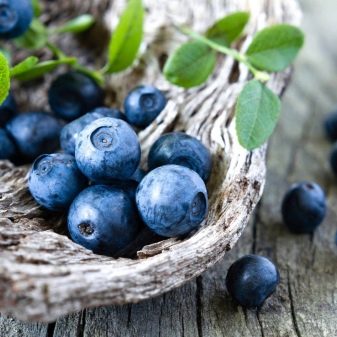
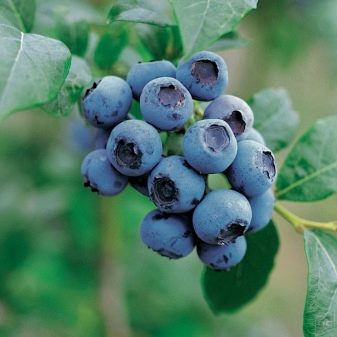
How are they different in appearance?
Bilberries and blueberries belong to the Heather family and have a similar composition and appearance, which is why they are often confused. However, the difference between these berries is noticeable already at the growing stage. For example, garden blueberries can grow over one and a half meters in height, while blueberry bushes do not grow taller than a meter. It is also worth paying attention to the direction of growth of the bushes: blueberries are a creeping plant, and blueberries grow vertically. In addition, these crops have different branch structures: blueberry bushes have thin, almost herbaceous branches, while blueberry stems are always woody along their entire length.
When describing the differences between blueberries and blueberries, one should also talk about the external features of the fruits themselves. Bigger blueberries: they are round, slightly flattened at the apex and reach 5-13 mm in diameter. Blueberry fruits are round and slightly elongated, their sizes vary from 3 to 10 mm. You can also distinguish one culture from another by the location of the berries: the fruits on the blueberry bushes are distributed individually, and on the blueberry bushes they look like bunches.
Ripe blueberries have a glossy skin and have a dark blue (almost black) color and a slight peculiar bloom... The pulp and juice of the berry has the same rich color. Ripe blueberries have a bluish-blue color and a matte skin, and the flesh is pale yellow, with a slight greenish tint. Blueberry juice is colorless and absolutely non-staining, unlike blueberry juice.
These berries also differ in their firmness: blueberries are denser and more elastic than blueberries.
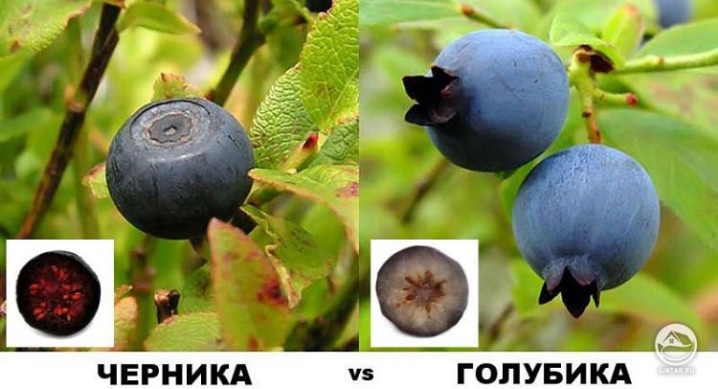
Differences in taste
Blueberries have a rich and tart taste (sweetness depends on how much sunlight the berries received during ripening). Due to the small seeds, the berry has a grainy texture. Blueberries, on the other hand, are juicy and sweet, with a slightly sour aftertaste and an illuminating aftertaste (they may taste like an apple, cherry or grape).
This berry has a characteristic crunch due to its taut and dense skin. It is very difficult to determine which of these berries is tastier, since this choice is based on culinary preferences, which are subjective and individual for each person.
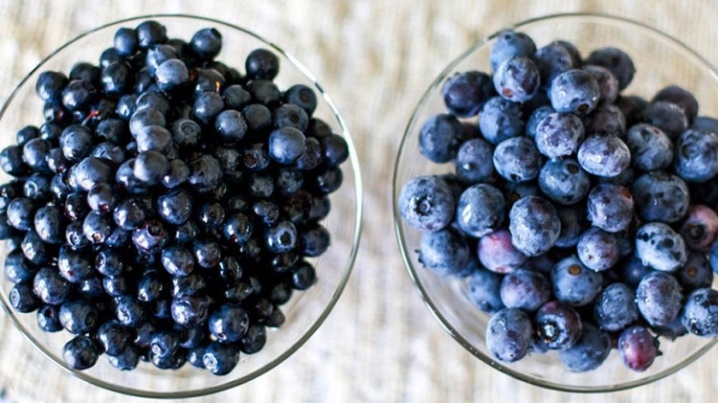
Comparison of growing technology
Blueberries and bilberries have minor differences in growing methods. First of all, it should be said that blueberries are a domesticated plant that has many varieties, each of which requires certain rules for care.
Blueberries are a wild crop that grows in poor soils with high pH levels.If a gardener wants to grow blueberries in his area, he needs to provide her with the most familiar conditions that are close to their natural habitat. To do this, 1 month before planting the bushes, you should prepare the soil:
- dig a groove with a diameter of about 60 cm under the place of the future blueberry bush;
- dig holes half a meter deep;
- fertilize the soil with gray, peat, oak leaves and needles.
It is important to remember that blueberries like to grow in full sun or partial shade.
For planting, it is better to use seedlings from the forest: they should be low and not less than two years old. In the absence of those, you can dig up adult bushes and trim them after landing on the site. For minimal injury to the rhizome, it is necessary to dig out the bushes together with a lump of their native land.


Blueberry bushes can also be grown from the berries themselves. For this you need:
- ripe fruits mash and place in a container;
- add water;
- get the seeds and part of the pulp remaining at the bottom and dry on a cloth towel;
- place the resulting seeds in a pot of sand and peat;
- cover the pots with a glass or foil lid;
- put containers in a lighted place (temperature - 50-100 C)
If you follow all the rules, then after four weeks the first sprouts will appear, which after half a month will need to be transplanted into larger pots. After one year, these seedlings can be planted in open ground using the above technology. With proper care, blueberry bushes can produce crops for about a quarter of a century.
Unlike blueberries, blueberries do not like organic feeding: they prefer drained soil rich in mineral fertilizers with a high pH level. In addition, blueberry bushes are grown in shallower and narrower pits: about half a meter in diameter and about 40 cm deep. Another feature of planting blueberry bushes is placing the seedlings in warm water 2 minutes before planting them in open ground.
The bushes begin to bear fruit within 36 months after they are planted on the site, the yield is about 5 kg of berries from one bush. The advantage of both crops is their endurance: in winter, blueberry and blueberry bushes can withstand frosts down to -35 C.


Difference in harvesting and storage
Blueberries are more capricious in terms of collection and transportation than blueberries. However, the general rule is to collect and store ripe berries directly in containers for transportation. This is due to the fact that pouring from one container to another damages the fruits, which affects their external and taste qualities, as well as the shelf life.
Blueberries quickly deteriorate in the warm season, so they must be stored at temperatures from 0 to +4 degrees (in such temperature conditions they can stay for 2 weeks). If blueberries are frozen fresh by means of dry freezing, then they will be suitable for consumption for 1 year.
Due to its peculiar taste, blueberry and blueberry fruits can be widely used in cooking, namely:
- make jam;
- cook compotes;
- process into syrups and confitures;
- cook teas and decoctions on their basis.
Also, berries can be added to baked goods or consumed fresh (it is important to remember that any heat treatment reduces the amount of vitamins in the product, while dry freezing retains the maximum amount of nutrients).


Which berry is better to choose?
Blueberries and blueberries have a similar composition of the main beneficial elements:
- vitamin A - An antioxidant, essential for the health of the eyes, skin and the maintenance of general immunity;
- vitamin C improves the functioning of the hematopoietic system, promotes healing of the skin, increases the body's resistance to bacteria and viruses;
- vitamin PP regulates the functioning of the stomach and pancreas;
- vitamin K strengthens the skeletal system, promotes the production of calcium in the body;
- magnesium strengthens the cardiovascular system, normalizes blood sugar;
- potassium reduces the level of slagging in the body, contributes to the enrichment of blood with oxygen;
- sodium helps to normalize water balance, supports the work of the nervous and muscular systems;
- carotenoids have antioxidant and immuno-strengthening effects.


Both berries are low in calories: blueberries typically have 39 calories, and blueberries typically have 57. If we compare the concentration of certain components, then blueberries, for example, contain 17 times more vitamin A and 2 times more vitamin C. However, blueberries have 8 times more iron and 3 times more fiber. Both berries are incredibly healthy. The use of blueberries helps to reduce the risk of oncological diseases, reduce the concentration of heavy metals and radionuclides in the body, normalize the functioning of the cardiovascular, visual and digestive systems, and also prevent varicose veins.
In turn, the addition of blueberries to the diet has a beneficial effect on the condition of blood vessels, eyes, and helps prevent diabetes mellitus (gastrointestinal diseases are a contraindication to eating blueberries). In addition, blueberry leaves can be used to heal burns and purulent wounds on the skin, and the pulp of the fruit can be used in cosmetology.
When choosing one or another berry, in addition to their healing and preventive properties, you should pay attention to their cost. The prices for both crops are quite high, but blueberries are more expensive than blueberries. This is due to the more complex growing and harvesting process.
Be that as it may, blueberries and blueberries are equal in their health and flavor characteristics. Based on the comparative analysis of these berries in this article, you can easily make your choice and decide which one to give preference to.
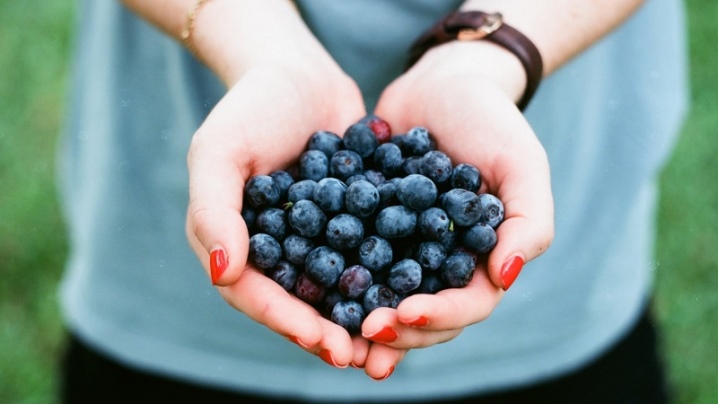













The comment was sent successfully.